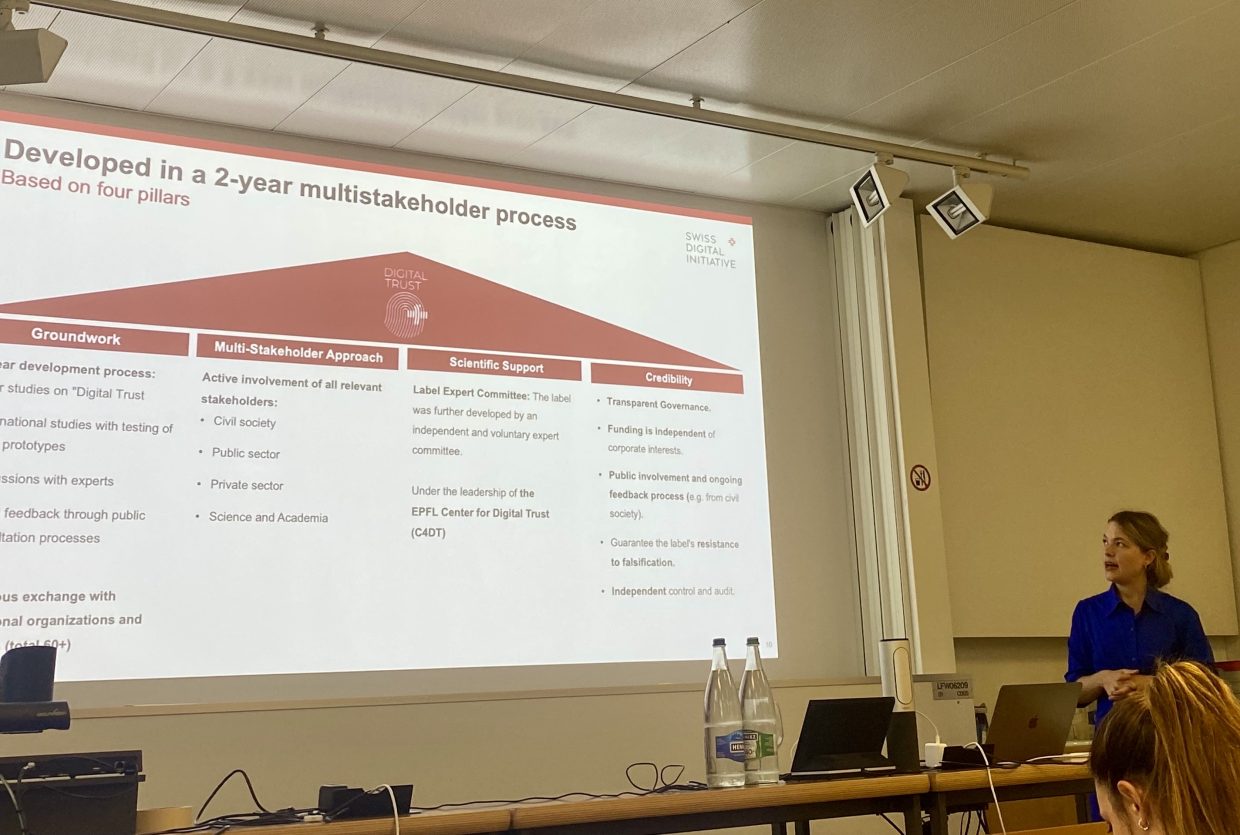A first of its kind: the Digital Trust Label and its human-centred approach
Jessica Espinosa • August 2022

Technology and innovation have presented great opportunities for human development. Access to the Internet has produced a profound and accelerated change in the processes of knowledge production, learning, human-technology interaction, communication, work, creation and even forms of representation. Moreover, the COVID-19 pandemic exacerbated the adoption and use of new technology, as businesses, schools, and public services had to continue operating despite the contingency quarantine measures. Thanks to the Internet and other technological innovations, such as collaborative and video conferencing platforms, people from around the globe were able to remain engaged with their loved ones, colleagues, clients, and students. And, as these new remote modalities have opened new possibilities and discussions for the future of work, studies and services, digitalisation is likely to increase at unprecedented levels.
However, despite the best intentions, technology can still cause unintentional harm and may affect human rights, individual autonomy, competitive market order, financial stability, democratic processes, and national sovereignty. Hence, to tackle the negative impact of technology, digital transformation must aim for the design and development of new technologies that are human-centred at heart, where people’s needs and desires are met but also where their rights are protected and respected. Oriented by this vision, the Digital Trust Label was developed to denote the trustworthiness of a digital service based on four main categories:
- Security – focuses on how digital service providers encrypt, share and store information and on how they report and manage vulnerabilities and risks.
- Data protection – evaluates how service providers manage, retain and process users’ data, and how users’ consent is recollected for data usage.
- Reliability – focuses on how the service provider manages to safeguard the continuity of the service and how they communicate accountability from their side.
- Fair user interaction – mainly addresses how artificial intelligence algorithms operate (if used), focusing on non-discrimination, equal access, and transparency on the use of AI algorithms in decision-making processes.
Within these four dimensions, 35 criteria were defined to guarantee a trustworthy digital service, having the user at the centre of the digital experience. For years, technology has been developed to make human life easier and simpler. However, tech has not been necessarily created with human/user well-being in mind, and, in some cases, it even reproduces or translates biases and discrimination experienced in the analogue world to the digital realm. For example, it has been shown that as artificial intelligence (AI) algorithms learn to make decisions based on data fed into them, these can reproduce biased human decisions or reflect historical or social inequalities regarding gender, race, and sexual orientation.
In this sense, the ongoing digital transformation aims at integrating people and technology in a more harmonious manner, where human well-being and rights are at the forefront of innovation. To achieve this, concerted efforts on many levels and through different stakeholders are needed, as positive effects on human rights and democracy in the digital world will depend not only on technological innovation but on human choices about the use and design of new technologies. Therefore, to advance digital responsibility on the matter, regulatory mechanisms based on concrete and universal digital principles, values and standards need to be developed, and Digital Trust Label is a first-of-its-kind effort to achieve this. Nevertheless, the complete success of these regulation attempts needs to be accompanied by changes in public policy, business strategy and individual practices that aim to create a fully trustworthy digital ecosystem.
The Digital Trust Label is having a holistic approach to digital trust and responsibility, where through its four dimensions – security, data protection, reliability, and fair user interaction – the human experience is at the centre of technological progress and digital experience. In this sense, the Swiss Digital Initiative is a pioneer in the adoption of human-centred digital governance and standards and it is actively working on building more trustworthy digital platforms and on safeguarding the highest ethical standards in the digital world to guarantee that human rights are not only respected but also protected.
Visit https://digitaltrust-label.swiss/ for more information on the Digital Trust Label
Follow the Swiss Digital Initiative on social media
Twitter: @sdi_foundation LinkedIn: Swiss Digital Initiative